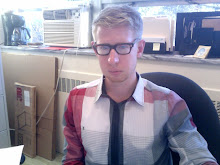Cabinets of Curiosity, or
wunderkammern, are remnants of an incredibly formative time in world history, known as the Age of Discovery. This time spanned that of the great explorers, Christopher Columbus and such, to that of anthropological expeditions into the mid-1800's. A time period where Western cultures collided with Asian, African and American cultures, a collision with innumerable lasting effects on humanity, environment, and territory, that the world is still recovering from to this day.
In many ways, these collisions of Western and Non-Western cultures can be thought of as order meeting chaos. Europe, with its institutions of taxonomy and empirically-derived knowledge, was confronted with a deluge of specimens, human acts, technologies, and modes of thought that were previously unknown and had not been tested on early scientific proving-grounds. Immediately, an emerging class of collectors sought to collect as much "discovery" as possible. With no curatorial precedence, these collectors organized their huge collections as logically as they could. In this great time of wonder, human horns might be displayed beside a Great Master painting, a two-headed sheep fetus might show up beside a mircoscopic fruit stone carving. The previous systems of order had to be modified or abandoned to allow for the unexplainable aspects of these new specimens. That is, until the scientific world laid down rules and proofs that would taxonomize these collections and all future ones by scientific rationale. The art and history worlds followed suit.
However, this time of early
wunderkammern reads queer on several different levels. I have attempted to highlight a few examples of this queer historical moment, taken from
Mr. Wilson's Cabinet of Wonder.
This brief historical moment was rife with an undercurrent of chaos, of relativity, and of brave new experiments that defied current thinking. As historian Michel de Certeau is quoted as saying, "An absense of meaning creates a rift in time."(pg.79) In times of great uncertainty, an order of chaos thrives. This chaotic order fails to produce homogeneity, instead creating singular new waves. In essence, a very queer moment.
In the pure sense of the word, this moment was defined by odd, unknown reasoning. On another level, this moment was non-heterodox in its collecting and taxonomy--a rejection of the normative rules of science in pursuit of truth. On yet another level, this moment is queer in its "otherness" or rarity in the cast of historical periods. Stephen Greenblatt, writing on European response to the Age of Discovery, "our great-grandfathers' certainties, debunked by our grandfathers, were suddenly turning out to be not quite so easily debunkable after all."(pg.81)
Wunderkammern existed at
an intersection of pre-modern and modern thought. I liken this to the early concerted efforts to categorize human sexuality that were focused on normal and deviant, resulting in only a few variants of heterosexuality. Eventually, people who did not fit neatly into these categories began creating their own dialogue concerning their sexualities, and brought identity relative to sexuality into the picture. This caused a rupture in the old classifications. And while it has taken many years to be institutionally recognized, a wide spectrum of sexualities is now part of sexual categorization.
While
wunderkammern may have struggled to find a unified practice, they plodded along amidst much uncertainty in collecting, going on to inform the collections that would build today's subject-specific museums. And if we recognize that the polyglot of today's museums represents a truly reflective collecting culture (think queer spectrum), then we must pay homage to the queer antecedents of cabinets of curiosity.





